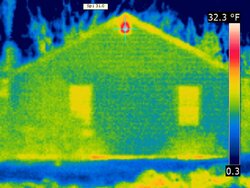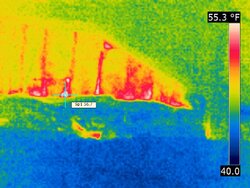So we have a FLIR camera at work, my boss let me take it home for the weekend so I could look around my house and see if I had any areas that were really bad. My house is a 1400 sqft cape built in '85. I just installed new windows, skylights, a roof, and blew insulation in the attic. (The attic is only half the length of the house, the remainder is cathedral.) In the past I air sealed in the basement and attic with spray foam. So anyway, as expected, my house looks really good through the lens of the FLIR camera. I'm seeing some cold areas around the AC vents (air handler is in the attic) and looking at the house from the outside I can see the foundation is really warm. I'm not really worried about the foundation as it's outside of the conditioned area. Today I bought some magnetic covers for the AC vents that I'll trim to size, but beyond that I guess there's not much else to do. It's a good thing, but I was kinda expecting to find some big cold spots when I started. I'm going to move on to finding a 4" LED recessed trim I like, so I can go buy 35 of the things and go about changing them out. Starting to wish I didn't go so crazy with lights in this place. 



 There are times, when I've been working under the diesels in my driveway that I'd give anything for that sort of lumens in my shower, rather than relying on the 9.5W LED and 13W CFL over the vanity.
There are times, when I've been working under the diesels in my driveway that I'd give anything for that sort of lumens in my shower, rather than relying on the 9.5W LED and 13W CFL over the vanity.

